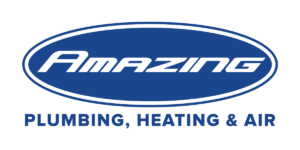The Importance of Regular Plumbing Inspections: Save Money & Prevent Disasters
Most homeowners and business owners don’t think about their plumbing until something goes wrong—like a burst pipe, a slow drain, or an expensive water bill. However, regular plumbing inspections can help you catch small problems before they turn into costly disasters.
Whether you’re maintaining a home or a commercial building, having a professional plumber inspect your system can save you time, money, and stress in the long run.
Why Regular Plumbing Inspections Matter
1. Prevent Costly Repairs
A minor leak may seem insignificant at first, but over time, it can lead to major water damage, mold growth, and structural issues. By scheduling routine inspections, a plumber can detect early signs of corrosion, cracks, or hidden leaks, helping you avoid expensive repairs down the road.
2. Reduce Your Water Bill
If you’ve noticed an unexpected spike in your water bill, it could be due to a hidden leak or inefficient fixtures. A plumbing inspection can identify leaking pipes, dripping faucets, or running toilets that could be wasting hundreds of gallons of water each month.
3. Improve Water Quality
Your pipes directly impact the quality of your water. Over time, they can accumulate rust, sediment, or mineral buildup, affecting the taste and safety of your drinking water. If you have an older home, regular inspections can help ensure your plumbing system is clean and safe for daily use.
4. Extend the Lifespan of Your Plumbing System
Like any other part of your home, your plumbing system ages over time. Regular maintenance helps identify parts that need to be repaired or replaced before they fail completely. This can extend the lifespan of your pipes, water heater, and other plumbing fixtures.
5. Prevent Emergency Situations
A burst pipe, backed-up sewer line, or broken water heater can be a nightmare to deal with. Regular inspections can spot early warning signs and prevent unexpected emergencies that could leave you with flood damage, no hot water, or an unusable bathroom.
What Happens During a Plumbing Inspection?
A professional plumber will typically check the following:
✅ Pipes & Fixtures – Looking for leaks, corrosion, or blockages
✅ Water Pressure – Ensuring proper flow to avoid pipe damage
✅ Drainage System – Checking for clogs or slow drains
✅ Water Heater – Inspecting for efficiency and leaks
✅ Sump Pump & Sewer Lines – Ensuring everything is in working order
✅ Toilets & Faucets – Checking for leaks and proper function
What Happens During a Plumbing Inspection?
🔹 Homes – At least once a year, or more often if you have an older plumbing system
🔹 Commercial Buildings – Every 6 months to a year, depending on usage
🔹 Before Buying a Home – Always get a plumbing inspection before making a purchase
Final Thoughts
Plumbing problems don’t fix themselves—they only get worse over time. Regular plumbing inspections give you peace of mind, knowing your system is working properly and efficiently.
If it’s been a while since your last inspection, now is the perfect time to schedule one. A little preventative maintenance today can save you from expensive repairs tomorrow!
Would you like to book a plumbing inspection? Contact us today! Ensure your plumbing system is in top condition before issues arise.
Join Our Comfort Club Membership!
For added peace of mind, consider joining our Comfort Club Membership. As a member, you receive exclusive benefits, priority service, and regular maintenance to keep your plumbing and HVAC systems running smoothly. Learn more here: Comfort Club Membership.
